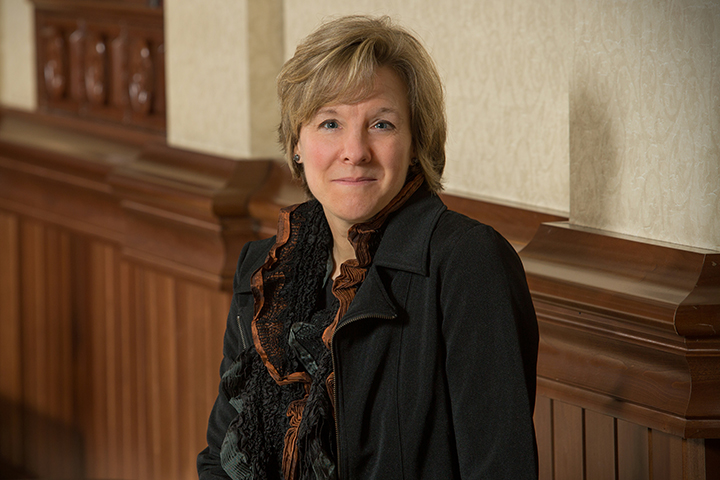FSU English professor wins prized fellowship

Meegan Kennedy, associate professor of English
Florida State University English Professor Meegan Kennedy has been selected as a recipient of a highly coveted grant from the National Endowment for the Humanities.
The $50,400 grant will allow Kennedy, an associate professor who teaches 19th-century British literature and the history of science and medicine, to focus on her research about how evolving technology for the microscope influenced scientific, cultural and even religious trends at the time.
Her research provides the foundation for a book she plans to complete during her yearlong fellowship titled: “Beautiful Mechanism: The Bounds of Wonder in the Victorian Microscope.”
“I’m so excited,” Kennedy said of the book that she’s been researching for several years. “I really can’t wait.”
The microscope in the early 1800s was much more than a piece of scientific equipment sitting in a laboratory, Kennedy explained. People regarded it as a mystical contradiction of sorts. They described it as an extraordinary and transcendent tool, but almost in the same breath they would express fear and caution.

Some Victorian-era writers called the microscope dangerous — they believed using it could damage the eye or become an addictive practice. Plus, they weren’t sure you could trust what you saw through the lens. At the same time, they wondered if it was revealing a magical glimpse of the infinite. In that context, the microscope had an important influence on religion in the Victorian age.
“You’d look through the microscope and it was kind of a window into the divine — a way to read the book of nature,” Kennedy said. “So what fascinates me is that this is a context where the same instrument becomes central to both science and religion as a way to access knowledge. That’s an important reminder for us, especially now when it seems as though people think of science and religion as opposite categories.”
Kennedy’s research also reveals that the microscope of the 19th century was used as a mass media device. Showmen would collect dirty ditch water from London and use a projection microscope to display on a large screen exactly what was in the water, which included microscopic animals. It looked like a horror show, Kennedy said, and the audiences were astounded and horrified.
“It triggered water panics over the course of the century and encouraged some of the public health water reforms in the middle of the century,” Kennedy said. “We can also look at this as a precursor of the cinematic audience because these audiences were sitting in a darkened room and watching these wriggling, lively, actually alive ‘actors’ on the screen.”
Another writer of the time suggested every home should have a microscope in the kitchen to detect whether someone had tampered with the food. The notion was that one could take a sample of bottled milk to determine whether it had been diluted with water and filled with chalk to make it look like pure milk. But a microscope in every kitchen never quite caught on.
Kennedy hopes “Beautiful Mechanism” illustrates how evolving technology at that time caused people to struggle with the idea of what it meant to be a modern person as the increasingly advanced microscope changed the world.
“It was integral to many broader cultural trends in the Victorian period, including imperialism, public education, public health and other big-picture issues,” Kennedy said.
Looking ahead, Kennedy will teach her usual coursework at Florida State in the spring of 2017 and subsequently start the fellowship.
This year, the National Endowment for the Humanities awarded more than $16 million of funding for a total of nearly 300 projects in the United States and Puerto Rico.

